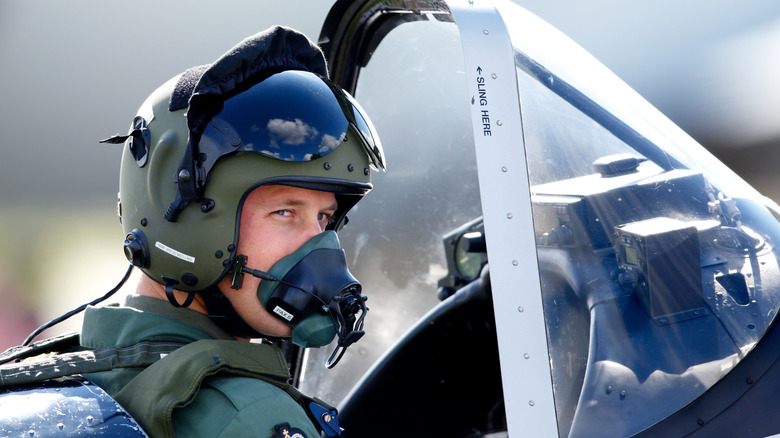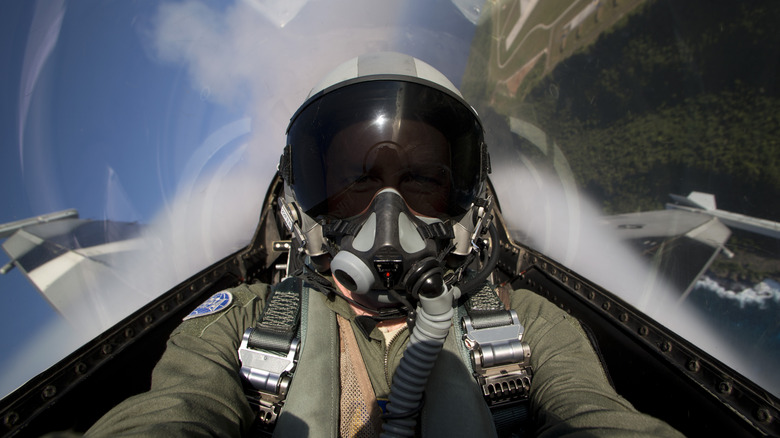Why Fighter Jet Pilots Need To Wear Oxygen Masks
If you've ever traveled on an airplane, you know that masks can drop down to supply oxygen in the case of an emergency. Airline oxygen masks have about a 15-minute supply and typically fall when an aircraft loses cabin pressure, but the pilots don't fly with them on all the time. That's not true of fighter pilots, and in movies like "Top Gun," it's clear that they never fly without them. Their oxygen masks supply O2, but possess other crucial functions as well.
But why do they need them all the time? After all, fighter jet canopies are considerably strong pieces of tech that usually only break during an ejection. The reason oxygen masks must be worn is due to the high G-forces pilots typically experience in a fighter jet. The mask pumps oxygen to prevent hypoxia, a condition where the brain fails to receive the necessary oxygen, keeping the pilot conscious regardless of the G-forces they endure.
In addition to masks, their flight suits are highly engineered to keep pilots safe during high-G maneuvers. These work by using inflatable bladders that squeeze a pilot's legs and abdomen during such intense actions, forcing blood back up into the brain. Because falling unconscious is a serious risk, the suit keeps blood pumping to the brain to prevent that. However, an oxygen mask is used for much the same reason.
A fighter pilot's mask does more than supply oxygen
While preventing hypoxia is the oxygen mask's primary function, it also serves additional purposes. Maintaining cabin pressure at wildly different altitudes can be problematic despite the existence of dynamic pressurization systems. The mask compensates for this, ensuring the pilot has a consistent oxygen source throughout the flight. Additionally, should the need to eject from their aircraft arise, they don't have to fumble with trying to put on an oxygen mask to protect themselves.
Essentially, the mask is a protective device that keeps the pilot safe during flight operations and in case of emergencies. It is tightly fitted to the face, using a seal to ensure leaks don't occur. It also includes built-in communication equipment, allowing the pilot to speak naturally over comms without removing the mask. Additionally, pilots must be able to see at night when flying in the dark due to keeping their cockpit lights off. Because of this, some models include a tongue-activated light to assist in writing or reading a map.
Although fighter pilot masks are intended to prevent hypoxia, the condition still occurs, necessitating further investigation into its causes. In 2018, NASA launched a two-year study to determine the effectiveness of masks after finding that pilots still suffered from hypoxia. The study took a deep dive into how pilots breathe, and recommendations were made to improve the systems currently employed by the U.S. military. This shows advancements and improvements to oxygen masks are ongoing.

